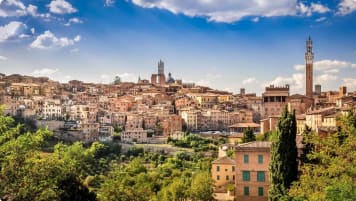Assisi, Italy
Lying amid Umbria's rolling plains is the city of Assisi, best known as the birthplace of Saint Francis, Italy’s patron saint and founder of the Franciscan order.
8 Aug 23 · 6 mins read
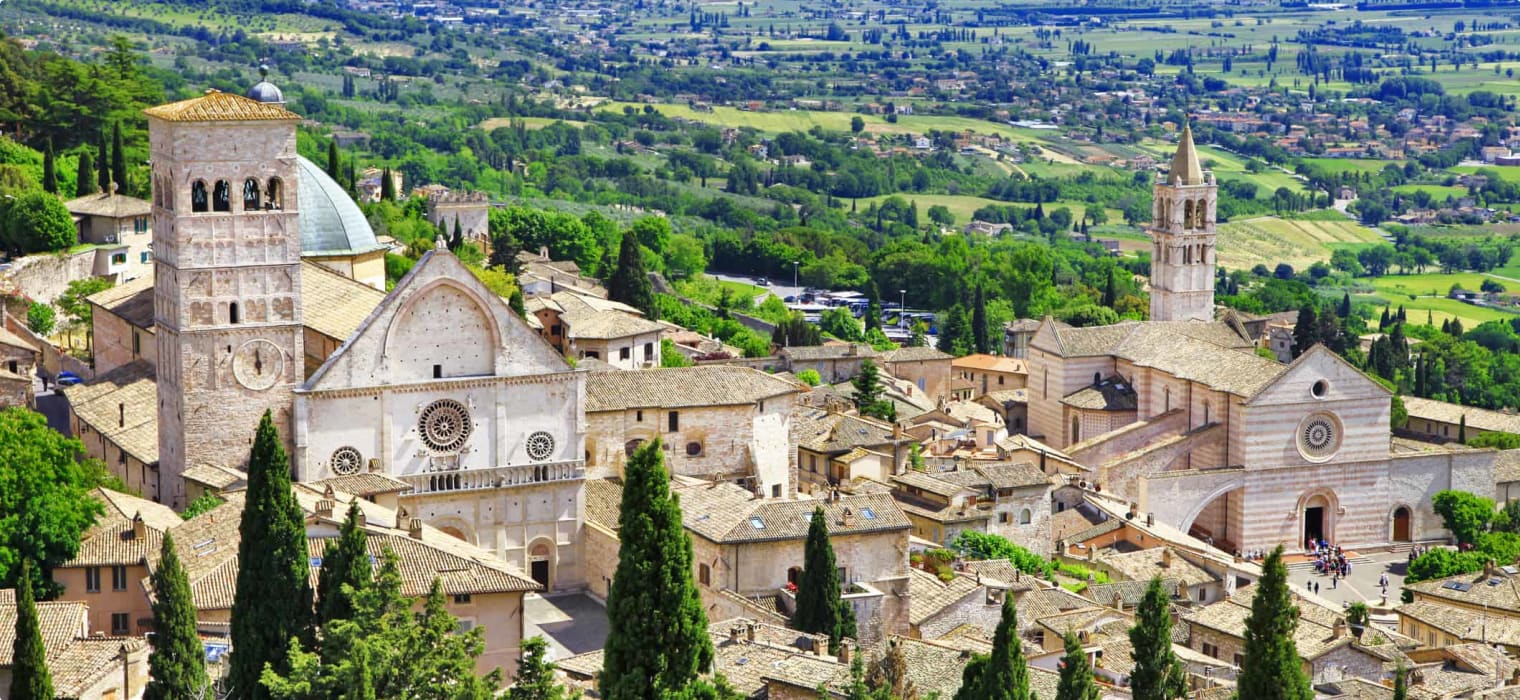
The History of Assisi
Lying amid Umbria‘s rolling plains is the city of Assisi, best known as the birthplace of Saint Francis, Italy’s patron saint and founder of the Franciscan order. Religious pilgrims have flocked to this central Italian city for centuries to visit the magnificent Basilica di San Francesco and the Basilica di Santa Chiara, the respective tombs of Saint Francis and Saint Claire. However, you don’t have to be religious to be struck by the sheer beauty of Assisi, enjoy its historical sites dating as far back as Roman times, or relish in some of Italy’s most famous artistic masterpieces.
Odyssey Traveller conducts a tour of Assisi as part of our Heritage Italy tours with the option for a full 22-day long tour or shorter 11-day trip. We stay in the city for three nights enjoying a morning walking tour of Assisi with our local guide, which includes a visit to the Basillica di San Franceso and other sites. Using the city has a base we also take day trips to nearby locations of Spoleto, Gubbio, and Perugia. This article explores the history and attractions of Assisi to assist your guided tour.
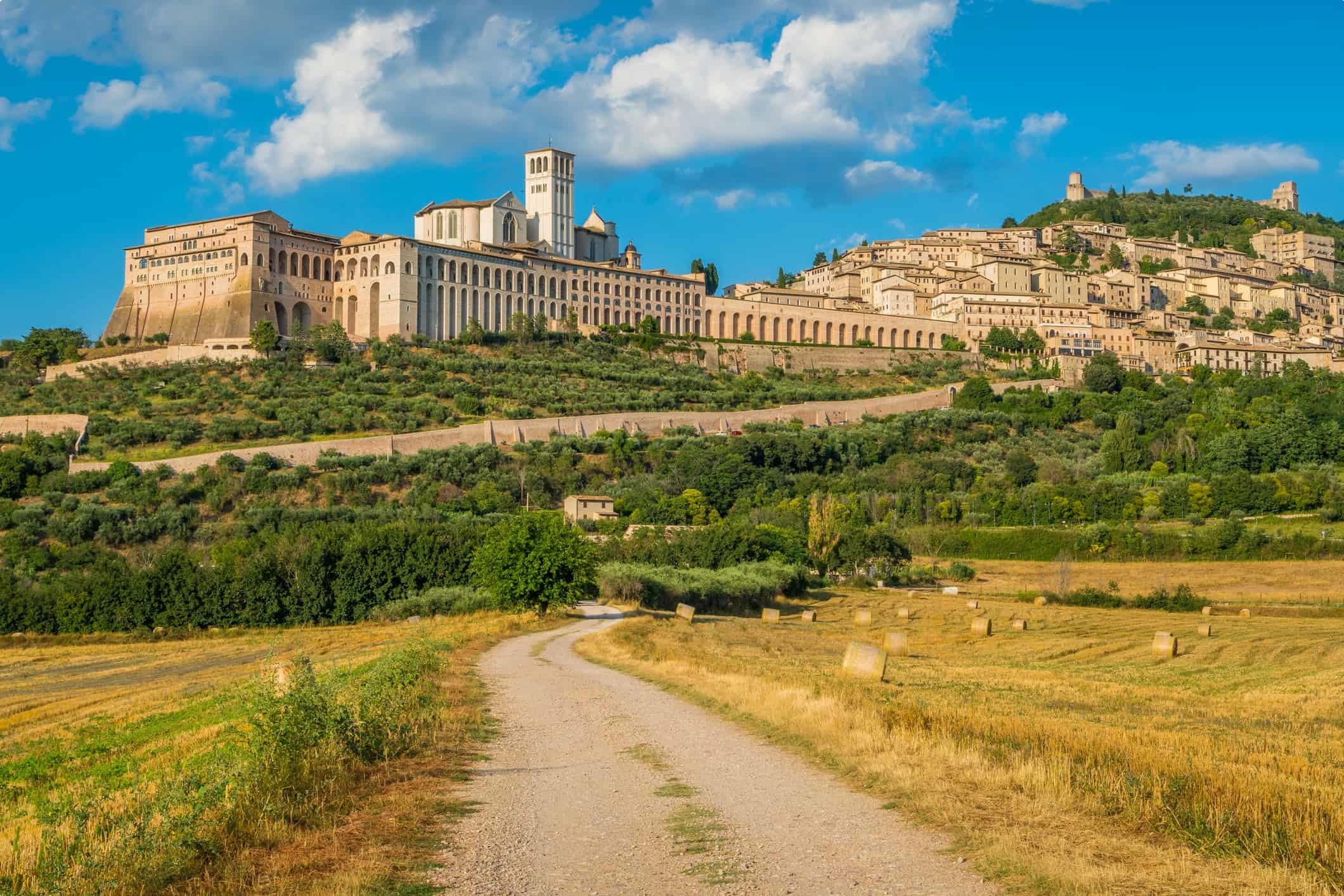
Ancient History
Assisi’s history begins around 1000 BCE, when a wave of Umbrian migrants moved to the region building small fortified settlements on the high ground. From 450 BCE, the Umbrians entered into a perpetual conflict with the Etruscans, who gradually took over the city.
After the Battle of Sentinum in 295 BCE, the Romans took over central Italy and Assisi became a “Municipium”. Substantial evidence of the Romans in Assisi remains today including the city walls, the forum (now Piazza del Commune), the Temple of Minerva (now transformed into the Church of Santa Maria sopra Minerva), a theatre, an amphitheatre, a number of aqueducts, and a Roman villa complete with well-preserved frescoes and mosaics.
By the early 3rd century AD, Christianity had spread to Assisi by a number of martyrs, above all Rufinus. Having come from Turkey to preach the gospel, he soon faced the opposition of the authorities and was sentenced to torture and thrown into the Chiasco River with a millstone tied to his neck. Nevertheless, he was successful in bringing Christianity here beginning a close association between the town and religion. Today he is the patron saint of Assisi and his remains rest in the Cathedral Church of San Rufino, one of the city’s oldest and most beautiful.

Turbulent Middle Ages
After the fall of the Roman Empire, Assisi fell into a turbulent and dark period suffering several destructions from barbarian invasions and incessant sieges and occupations by alternating powers. Over the following centuries the city would pass between the Ostrogoths, Byzantines, and Lombards, before being eventually assigned to the Frankish Duchy of Spoleto by Pope Innocent III.
During the 12th century the city finally began to exert its municipal freedom as part of a wave of communes that were spreading throughout the region. The citizens rebelled in 1198 against the imperial power and established their own independent communal government in Assisi with consuls and a Capitano del popolo (captain of the people).
Meanwhile, Giovanni Francesco di Bernardone had been born in 1182 in a small house in the city centre of Assisi (now the church of Chiesa Nuova). Later canonized as St. Francis, and today sharing honours with St. Catherine of Siena as the patron saint of Italy, he would prove to be the most important man of Assisi. Leading a revolutionary life, he abandoned his lifestyle of luxury to devote himself to Christianity through absolute poverty. His preaching the values of peace, pauperism, and fraternity drew thousands of followers from both Italy and abroad, giving way to the Franciscan order, and rebuilding the Church from crisis.
A number of wonderful and majestic Franciscan Monuments of grand embellishment were built soon after his death, most notably the magnificent Basilica di San Francesco – the final resting place for the saint’s bones and house of some of Assisi’s most treasured works of art. The equally grand Basilica di Santa Chiara was built to remember Saint Claire of Assissi, a follower of St. Francis and founder of the Order of Poor Ladies.
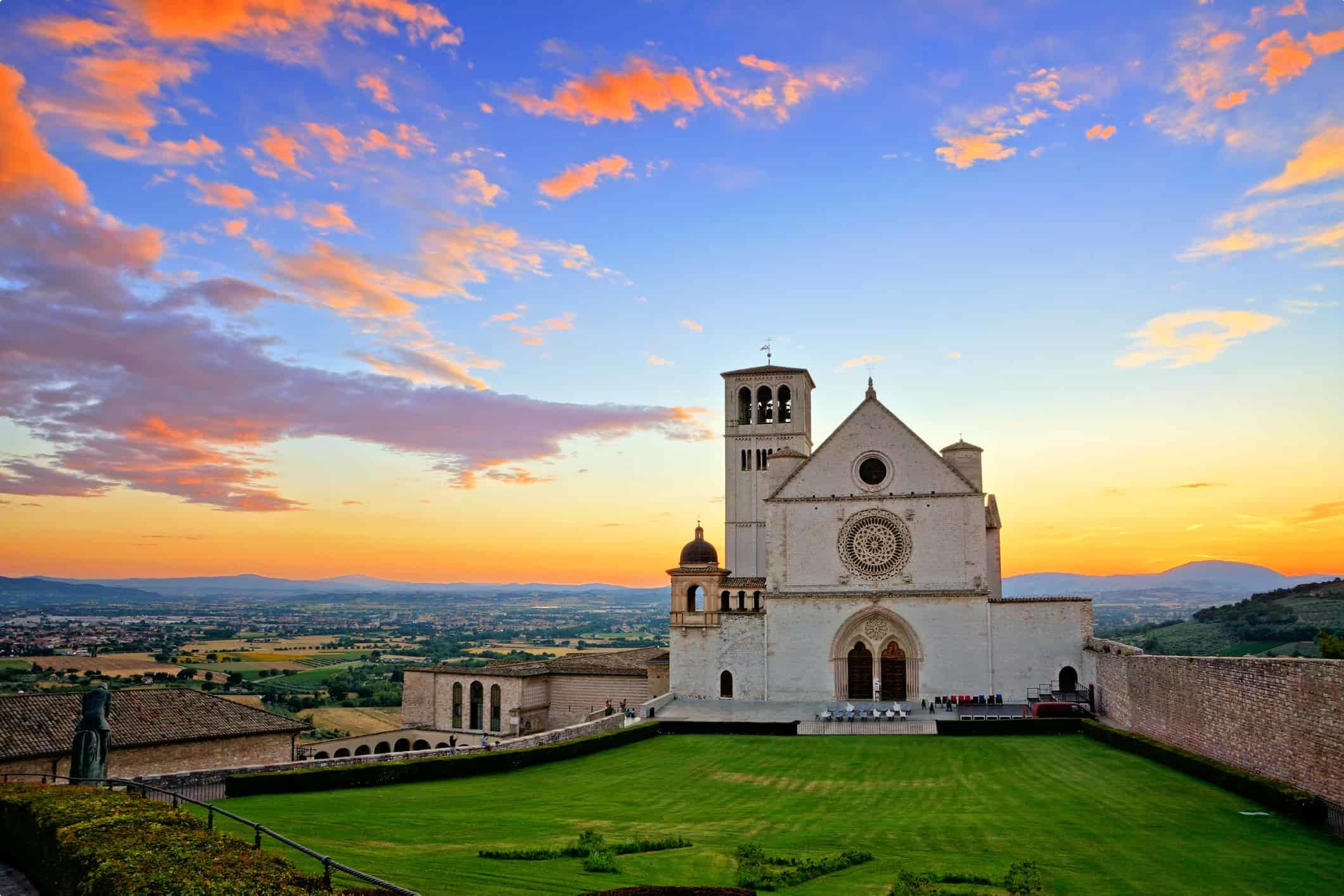
However, the peace and serenity brought to the city by the Franciscan experience only managed to last a few decades before hostility and violence returned. Assisi, like all Italian towns of the time, was soon caught up in the fierce rivalry and wars between the Ghibellines and Guelphs, factions supporting the Pope and the Holy Roman Emperor respectively. Assisi would fall under the alternating influences of the different fractions during the 13th and 14th centuries before ultimately siding with the Ghibellines.
Assisi would henceforth come under a clear dependence on the Papal States. And in 1367, on the orders of the papal legate, cardinal Gil de Albomoz, the city walls were reinforced and the Rocco Maggiore, an imperial fortress on top of the hill above the city, was rebuilt. This was done in order to defend the city from outside forces and avoid the uprising of heretic rebels.
Nevertheless, throughout the 15th century Assisi was torn apart by frequent raids of Perugian warloads, and eventually fell under the rule of several despots, including the soldier of fortune Biordo Michelotti, Gian Galeazzo Visconti and his successor Francesco I Sforza, dukes of Milan, Jacopo Piccinino and Federico II da Montefeltro, lord of Urbino.
A Peaceful Modern History
Lasting peace finally came to Assisi following the conquest of Umbria by Pope Paul III in the mid-16th century. With peace came a measure of prosperity and a number of new buildings and ‘palazzi’ sprung up all over Assisi. Most famous are the Basilica of Santa Maria degli Angeli and the 17th-century palazzi Bernabei and Giacobetti. Assisi would stay under the rule of the Papal States until 1860, when the town finally became part of the newly created Kingdom of Italy.
Today, Assisi remains a popular city to visit – with numerous historical and religious attractions – and a famous pilgrimage destination inextricably linked in legend with its native son, St. Francis.
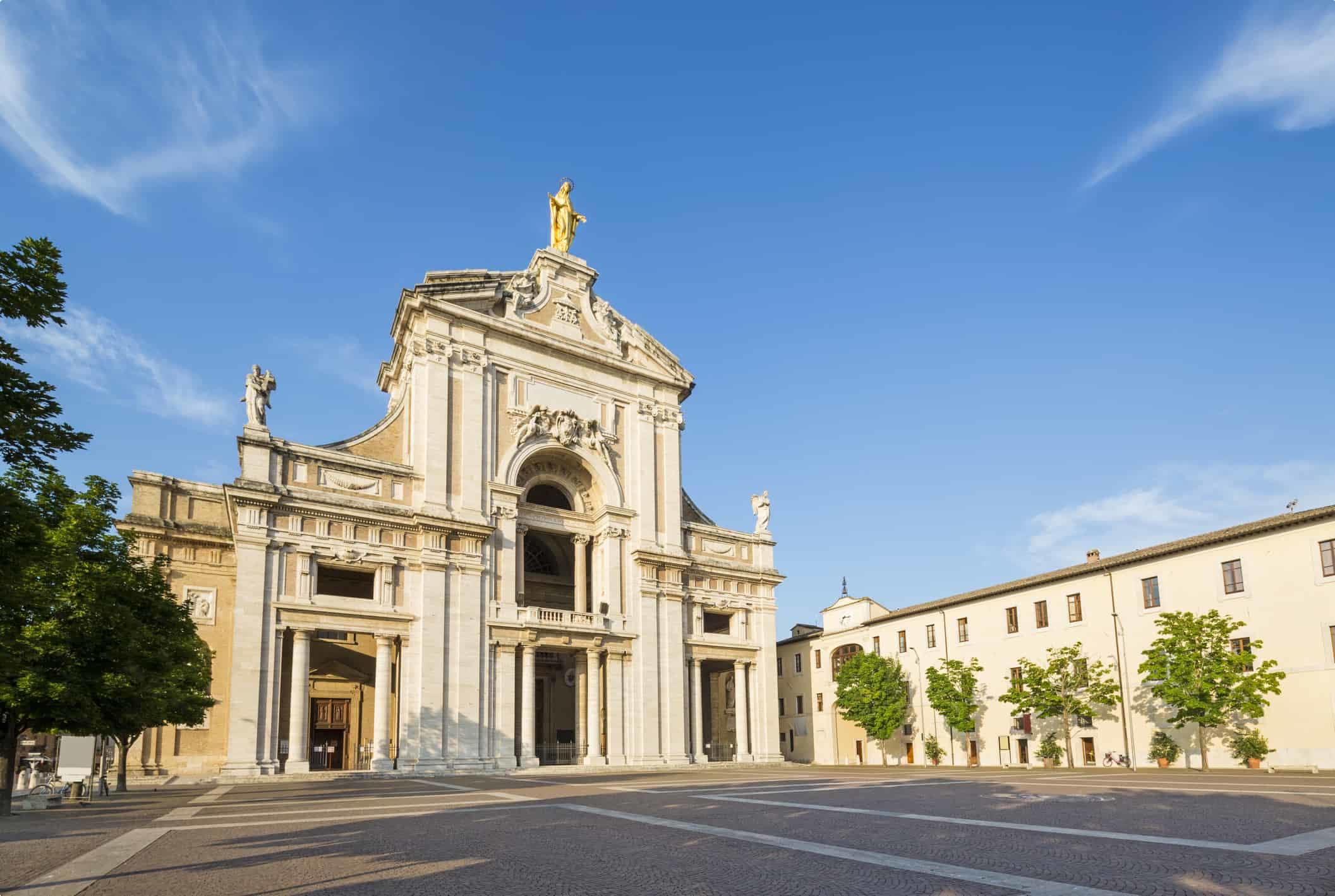
Assisi Tour
Odyssey Traveller visits Padua as part of our Heritage Italy tours, both 22-days and 11-days. Examining the heritage, history, and culture of Italy, our full private tour takes you from the eternal city of Rome into the rolling terracotta countryside of Tuscany with its hilltop towns and on to the olive-clad slopes of the Paduan Hills. We stay in the green and craggy landscape of Umbria and spend 5 days at Castelammare di Stabbio on the Bay of Naples where we have the chance to view the breath-taking scenery of the UNESCO World Heritage Site, Amalfi Coast, with its whitewashed villages tumble into azure blue seas.
Our fully escorted small group tour of Italy features guided walks through the best of the Italian countryside. We also take in many of Italy’s major cities. These include viewing the Renaissance cities of Florence, Pisa, and Lucca. We also visit the Umbrian medieval cities of Perugia, Gubbio, and St Francis’ Assisi. In the north of Italy, we visit the ancient university seats of Verona and Padua. We take in the stunningly beautiful Venice. Meanwhile, in the south, we visit the spectacularly cosmopolitan city of Naples, the Roman remains of Pompeii and the island retreat of Capri.
Odyssey Traveller has been serving global travellers since 1983 with educational tours of the history, culture, and architecture of our destinations designed for mature and senior travellers. We specialise in offering small group tours partnering with a local tour guide at each destination to provide a relaxed and comfortable pace and atmosphere that sets us apart from larger tour groups. Tours consist of small groups of between 6 and 12 people and are cost inclusive of all entrances, tipping and majority of meals. For more information, click here, and head to this page to make a booking.
Articles about Italy published by Odyssey Traveller
- The Roman Empire
- Who were the Roman Emperors
- Questions About Italy
- Trip Advice for Travellers going to Italy
- 10 Great Books to Read Before You Visit Italy
- as well as more articles on Italy here
External articles to assist you on your visit to Italy
Related Tours
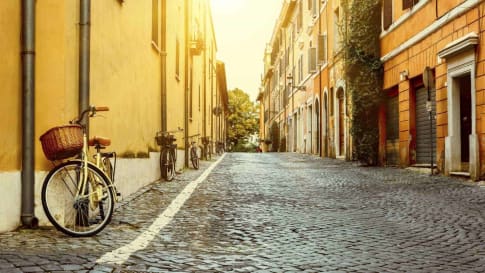
22 days
Sep, Apr, MarHeritage, Culture and History of Italy | Small Group Tours for Seniors
Visiting Italy
Rome, the world’s first superpower, lasted for almost a thousand years. In this small group tour for senior couples and solo travellers we thread our way through the Rome of the Emperors, then through the Italy of the Renaissance, Michelangelo, the Medici, and the Borgia. In the south, we visit the cosmopolitan city of Naples as well as Pompeii and the island retreat of Capri.
From A$13,695 AUD
View Tour
11 days
Sep, MayHeritage, culture, history of Italy, seniors small group - Short Tour
Visiting Italy
Odyssey's small group tour features the best of the Italian countryside as well as the great cities and icons of Italy. We will see the Renaissance cities of Florence, Pisa, and Lucca as well as the Umbrian medieval cities of Perugia.
From A$8,195 AUD
View Tour
